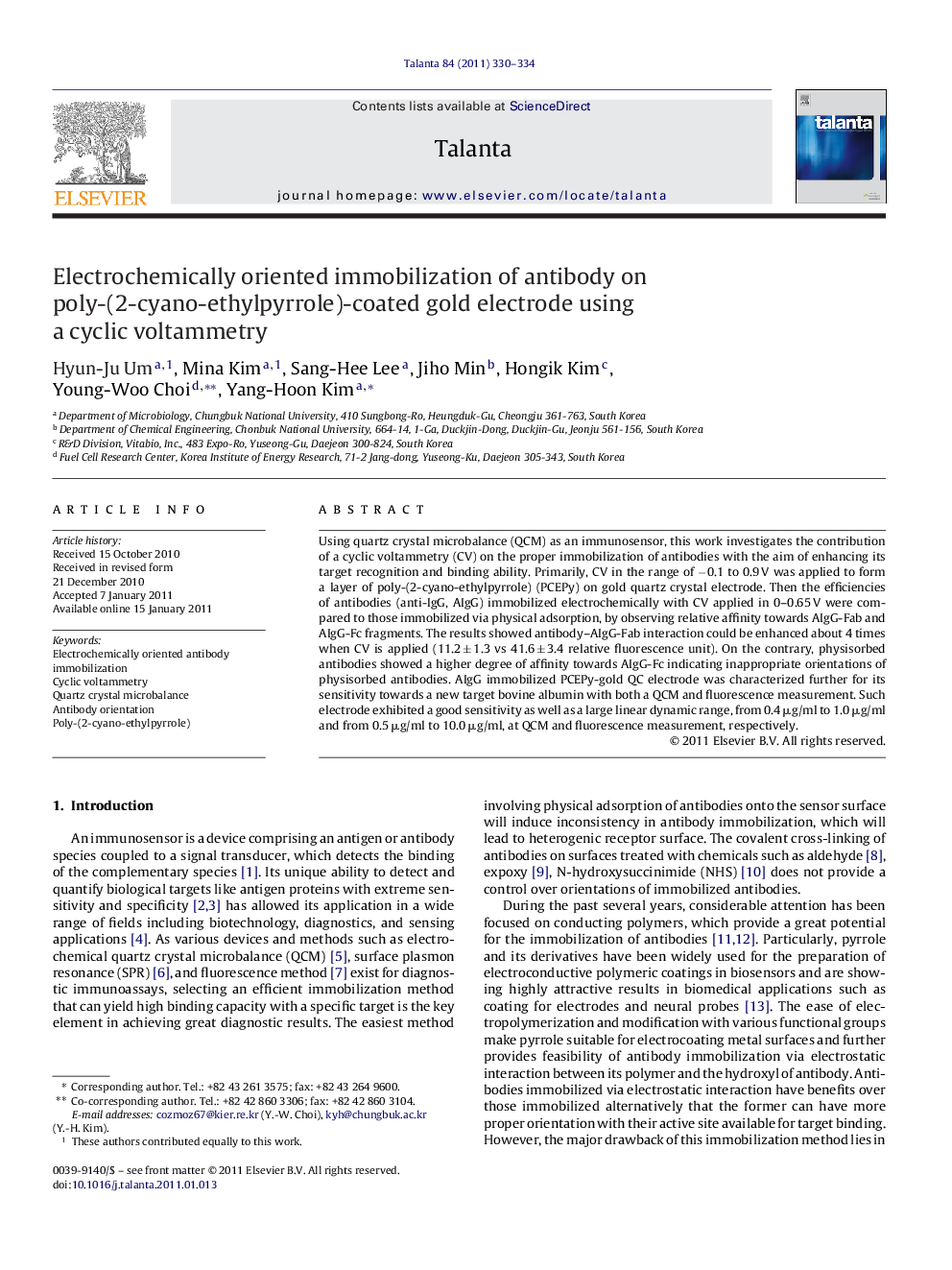| Article ID | Journal | Published Year | Pages | File Type |
|---|---|---|---|---|
| 10560117 | Talanta | 2011 | 5 Pages |
Abstract
Using quartz crystal microbalance (QCM) as an immunosensor, this work investigates the contribution of a cyclic voltammetry (CV) on the proper immobilization of antibodies with the aim of enhancing its target recognition and binding ability. Primarily, CV in the range of â0.1 to 0.9 V was applied to form a layer of poly-(2-cyano-ethylpyrrole) (PCEPy) on gold quartz crystal electrode. Then the efficiencies of antibodies (anti-IgG, AIgG) immobilized electrochemically with CV applied in 0-0.65 V were compared to those immobilized via physical adsorption, by observing relative affinity towards AIgG-Fab and AIgG-Fc fragments. The results showed antibody-AIgG-Fab interaction could be enhanced about 4 times when CV is applied (11.2 ± 1.3 vs 41.6 ± 3.4 relative fluorescence unit). On the contrary, physisorbed antibodies showed a higher degree of affinity towards AIgG-Fc indicating inappropriate orientations of physisorbed antibodies. AIgG immobilized PCEPy-gold QC electrode was characterized further for its sensitivity towards a new target bovine albumin with both a QCM and fluorescence measurement. Such electrode exhibited a good sensitivity as well as a large linear dynamic range, from 0.4 μg/ml to 1.0 μg/ml and from 0.5 μg/ml to 10.0 μg/ml, at QCM and fluorescence measurement, respectively.
Related Topics
Physical Sciences and Engineering
Chemistry
Analytical Chemistry
Authors
Hyun-Ju Um, Mina Kim, Sang-Hee Lee, Jiho Min, Hongik Kim, Young-Woo Choi, Yang-Hoon Kim,
